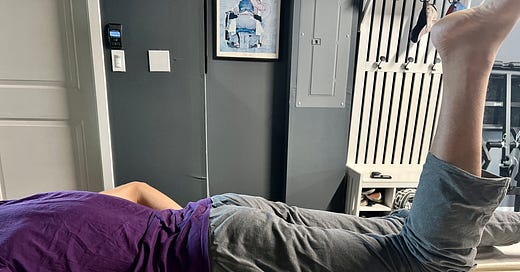Compensational Patterns as a Treatment Strategy
At first glance, the word compensation may have a negative connotation to it. However, it doesn’t always have to be so. In my experience, compensations are beneficial and can help clients understand their bodies more, which in turn helps them heal and improve.
In a recent case, my client and I have put our focus into the lumbopelvic-hip complex, as this is where many of his problems stem from. Interestingly, he doesn’t compensate for the “normal” patterns typically seen in an assessment. For instance, a person trying to rotate their hip internally typically compensates by unconsciously elevating the same side hip in the frontal plane or up towards their armpit, thus using the lumbar region. However, he does the opposite and then some. Without going into too much detail about this case, his nervous system has very poor cortical awareness of his “stuff,” and compensations are, in a word, chaotic. His neurological net seems to have poor connectedness and has learned to compensate in “strange” ways. We are dealing with other issues concurrently as well.
My strategy with him has been to teach him to compensate on purpose and use it to our advantage. Because he has such poor control and awareness of his body, we chose to focus on the lumbopelvic-hip complex as an entire system versus learning to control the individual bits. I thought this would make it easier for him and his nervous system to learn and control these compensational patterns.
So far this strategy has proved fruitful and we have seen great improvement specifically in hip internal and external rotation and the lateral flexion(s) of the lumbar spine. Currently, we are working to restore the fundamental motion and curve of the lumbar spine, which are extension and lordosis.
We are learning how to extend the hips and use the lumbar spine to help and vice versa. Below is an image of his hands acting as a cue to feel his pelvic bone “get heavy” as he uses his lower back and hips to go into extension of each.
Normally I would want a person to learn to disassociate the hips from the low back. However, we’re clumping it together and once we get better control and awareness, we’ll break it apart then.



